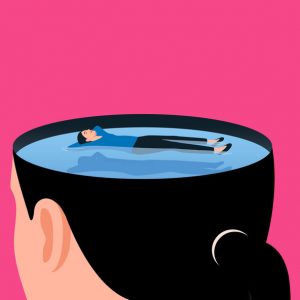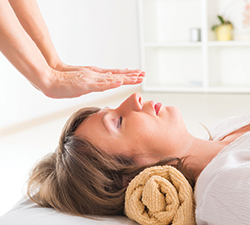Complementary Approaches to Pain Management
Pain management is a battle doctors fight every day. Everyone’s body responds differently to pain and to treatments aimed at relieving that pain. Opioid drugs are overused and often misused by Americans as they search for a way to relieve their pain.
The National Institute of Health’s MedlinePlus Magazine spoke to Dr. Josephine Briggs, director of the National Center for Complementary & Integrative Health (NCCIH), about the research they are doing on complementary approaches to help manage pain. She stated that opioids don’t help people develop personal strategies for pain relief, and that a recent study funded by NCCIH suggests that regular long term yoga may improve the pain people experience.
When asked how the medical community might change in the future as a result of the pain research that is currently going on, she said the following: “Americans do turn to complementary practices for pain management. We know from data that many people living with pain try these various approaches for pain and many use them quite extensively. That includes relaxation techniques like breathing and meditation. It includes chiropractic, massage, and acupuncture. While we recognize that they are helpful to people, we really do not see them as integrated into conventional care yet to improve pain management. The evidence makes it promising, but we aren't quite there yet.”
Hopefully in the future, complementary treatments for pain management will become more mainstream and be the first therapies used in managing pain.
How Meditation Changes the Brain and Body
The benefits of mindfulness meditation, increasingly popular in recent years, are supposed to be many: reduced stress and risk for various diseases, improved well-being, a rewired brain. But the experimental bases to support these claims have been few. Supporters of the practice have relied on very small samples of unrepresentative subjects, like isolated Buddhist monks who spend hours meditating every day, or on studies that generally were not randomized and did not include placebo control groups.
To meditate mindfully demands ‘‘an open and receptive, nonjudgmental awareness of your present-moment experience,’’ says J. David Creswell, who led the study and is an associate professor of psychology and the director of the Health and Human Performance Laboratory at Carnegie Mellon University. One difficulty of investigating meditation has been the placebo problem. In rigorous studies, some participants receive treatment while others get a placebo: They believe they are getting the same treatment when they are not. But people can usually tell if they are meditating. Dr. Creswell, working with scientists from a number of other universities, managed to fake mindfulness.
Read the rest here.
Plan for Today: Workout Habits for Success
Massage therapy is a physically demanding job, especially on our hands and wrists. According to an article published in Arthritis Care & Research, exercise can protect against carpal tunnel syndrome and other repetitive stress injuries (RSIs).2 The article discusses a study in which participants who engaged in moderate exercise (such as half-hour walks) three or four times a week showed a 16 percent reduction in risk of developing an RSI. The study demonstrates that regular exercise helps restore overall stability to the musculoskeletal system. As practitioners in a field where carpal tunnel and RSIs are a real possibility, it is encouraging to hear that exercising regularly can help prevent these conditions.
We also spend a lot of our time in forward flexion while pushing and pulling body parts. Strengthening the core muscles (abdominals, back, and glutes) is important to help us maintain proper positioning while working on clients. Strength training, Yoga and Pilates are excellent options for keeping our core muscles strong. The American College of Sports Medicine (ACSM) and the American Heart Association (AHA) both recommend strength training twice per week. In addition, a stretching routine or tai chi are nice compliments to a core body workout and will help release some of the stress and tension that can build up in our backs and hamstrings from bending over massage tables. While all of the exercises mentioned here can be done at a fitness center, they also can be done at home or in a hotel with the help of a book, DVD, or a smart phone app.
Read the rest here.
The Rewarding Work of Massage for Addiction Recovery
Addiction is a powerful problem; more than 20 million Americans age 12 and older had a substance use disorder in 2015, according to the American Society of Addiction Medicine.
As Scearce spoke with MASSAGE Magazine about her experience working in a specialty facility with this clientele, one word came up over and over again: rewarding.
“The greatest feeling is watching them on the journey that they take,” Scearce said. “It’s just extremely rewarding.”
According to the Substance Abuse and Mental Health Services Administration’s 2015 National Survey on Drug Use and Health, an estimated 3.5 million U.S. adults—1.4 percent of people 18 or older—received treatment for substance abuse; 2.3 million of those were treated at specialty facilities.
For massage therapists interested in providing massage for recovery from addiction, the substance abuse treatment environment offers unique benefits and challenges.
Read the rest here.
Consumers Drive Complementary and Alternative Medicine Movement
A growing number of hospitals are adding complementary or integrative therapies to their menu of services. One reason for the growth is the rise of consumerism in health care. “As patients want this, providers are being forced to help deliver some of these services,” says Andrew Ziskind, M.D., a senior vice president at Premier Academic Alliance.
Another factor is growing acceptance among clinicians of various nonconventional therapies as an adjunct to traditional medicine, he says.
In addition to Reiki, complementary therapies include acupuncture, massage therapy, deep breathing exercises, meditation, guided imagery and yoga.
Service models vary measurably. Some hospitals create comprehensive outpatient integrative medicine centers, others weave specific complementary services into inpatient care, and some offer a combination of outpatient and inpatient services.
Read the rest here.


 GET STARTED
GET STARTED



 Call Us
Call Us Get Information
Get Information Tour Soma
Tour Soma Apply Now
Apply Now



